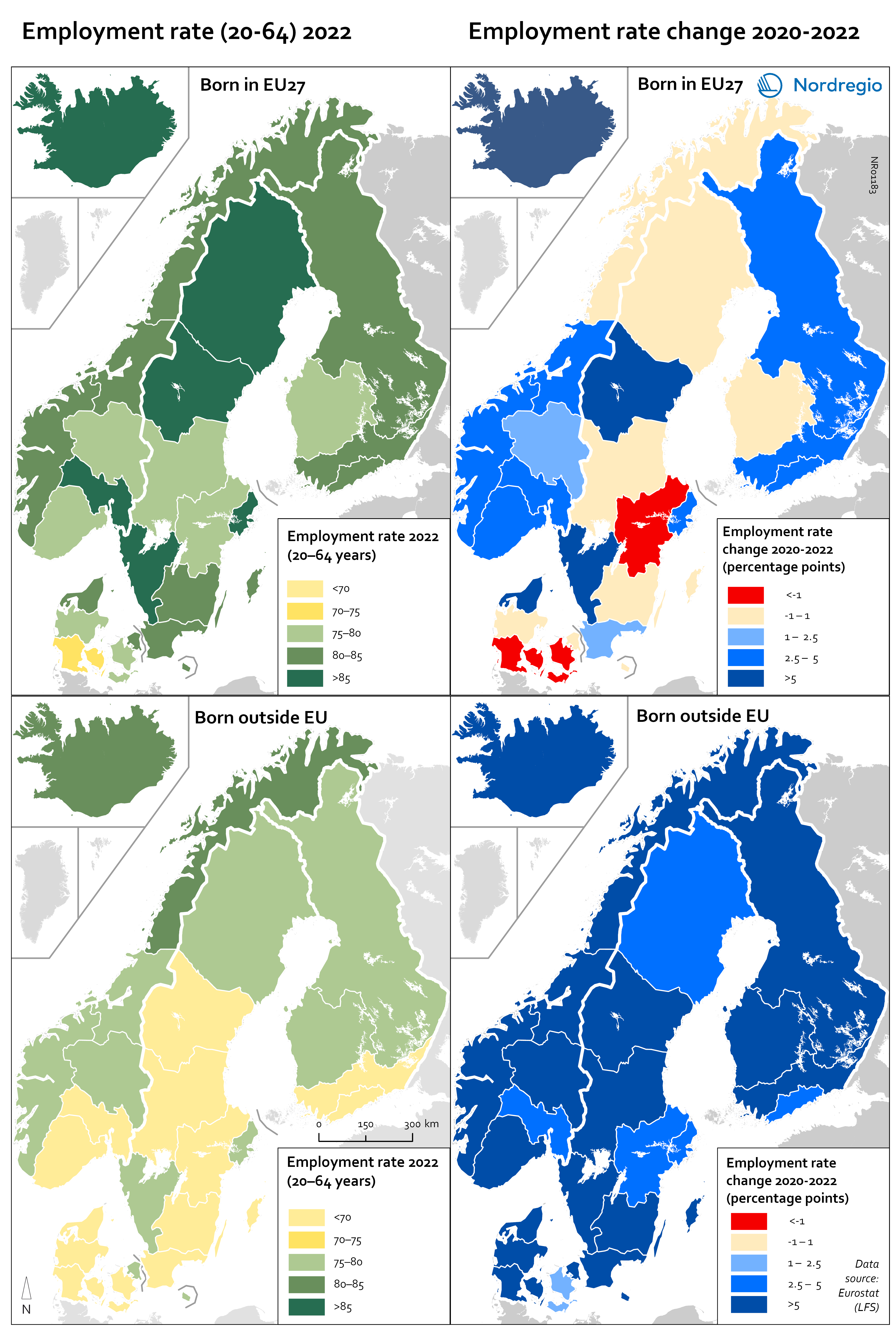These maps shows the employment rate in 2022 for those born in a EU country (top left) and those born outside of the EU (bottom left), as well as the change in employment rate between 2020 and 2022 for those born in the EU (upper right) and outside the EU (lower right). The data is displayed at NUTS 2 level and comes from the labour force survey (LFS).
The category ‘foreign-born’ is quite heterogeneous and consists of everything from labour migrants to refugees – two groups who face quite different conditions and have different connections to the labour market. The employment rate for people born in another EU country – a group that includes a large proportion of labour migrants – has been on par with the employment rate for native-born people for a long time. As can be seen in the top-left figure in the map, in 2022 all NUTS2 regions except Southern Denmark had an employment rate of 75% or more for this group. The highest employment rate was observed in the Swedish NUTS2 regions of Middle Norrland, Stockholm and Western Sweden, followed by Oslo in Norway and Iceland.
The employment rate for people born outside of the EU (a group that largely consists of refugees) has been lower for a long time than that of native-born people and those born in the EU. While the employment rate for people born in non-EU countries is still lower than for natives (a 15 percentage point difference (pp) in Sweden, 11 pp in Norway, 7 pp in Denmark and Finland, and 2 pp in Iceland), this gap has been closing in the last couple of years since the pandemic.
Between 2020 and 2022, the employment rate for those born outside of the EU rose almost eight percentage points in Denmark (to 72%), seven in Finland (70%), six in Iceland (81%), and five in both Norway (70%) and Sweden (69%). This means that all the countries except Iceland recorded their highest employment rate for this group since 2000.
The highest employment rates for those born outside of the EU in 2022 were found in Northern Norway (82%), Iceland (81%), Copenhagen Region (Hovedstaden) (76%) and Stockholm (74%). In the southern parts of Finland and Norway and most of Denmark and Sweden, the employment rate is still below 75%. However, all regions saw an increase since the pandemic. Northern Norway and Innlandet in Norway, Etelä Suomi in Finland, Southern Denmark and Northern Jutland in Denmark, and Northern Middle Sweden all had an increase of more than ten percentage points between 2020 and 2022.
The increased employment rate for foreign-born people, and especially for those born outside the EU, can be explained by the high demand for labour and the fact that much of the labour reserve consisted of foreign-born people. In Sweden, for example, more than half of all unemployed people are born abroad. Previous studies have shown that it takes 6–8 years before a cohort of foreign-born people reaches the highest degree of employment. The refugees who arrived during the refugee crisis in 2015/2016 are now reaching that stage. Studies in Sweden show that the increase is mainly in lower-paid jobs. This contrasts with the native-born population for whom growth has mainly been in high-paid jobs.

